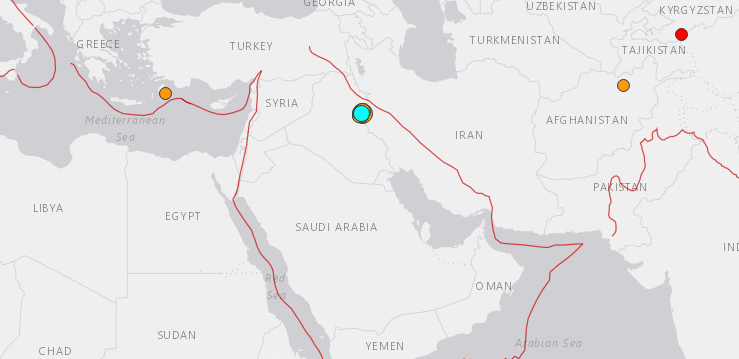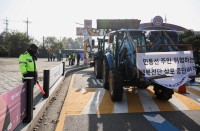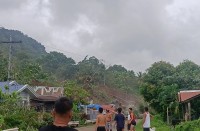
by Amir Havasi
Agence France Presse
TEHRAN, Iran (AFP) — A strong 6.4-magnitude earthquake hit Iran’s western province of Kermanshah late Sunday, the country’s institute of geophysics said, with local officials reporting some 260 people injured.
The epicentre of the quake was 17 kilometres southwest of the city of Sarpol-e Zahab, according to the institute, which said it struck at a depth of 7 kilometres.
At least 260 people were injured in Sarpol-e Zahab and the neighbouring city of Gilan-e Gharb, close to the Iraqi border, Kermanshah governor Houshang Bazvand told state television.
“We’ve had no reports of fatalities so far. The situation is currently under control,” Bazvand said.
“There were power and water cuts in both cities, but they lasted only a few minutes.”
The head of Iran’s emergency medical services Pirhossein Kolivand said in televised comments that most of the injuries were due to “people panicking and fleeing their homes”.
The number of those hurt could rise as 18 emergency teams dispatched from neighbouring provinces were still assessing the damage, he said.
Sarpol-e Zahab resident Fariba Babayi described the fear that swept the city when the quake hit.
“Lights went out, walls looked as if they were going to fall and all the neighbours were screaming,” Babayi, 36, told AFP by telephone.
“I didn’t run this time, even though my mother was out calling to me.”
Those living in the city are all too familiar with the devastation earthquakes can bring after it bore the brunt of a 7.3-magnitude termor last November that killed 620 people and injured thousands more.
Partial rebuilding work on Babayi’s house finished just a month ago after it was razed in that quake and her family are still paying construction costs.
“We cannot go back to normal life anymore. There are all the bad memories, the trauma people live with,” she told AFP.
There were no official details of any damage to buildings and infrastructure after the latest earthquake.
The region was rocked by seven weaker aftershocks an hour after the initial tremor, the strongest of which was magnitude 5.2, the geophysics institue said.
There were also reports that the initial quake was felt across the border in Iraq.
‘Just reconstructed’
Morteza Salimi, an official with the red crescent society of Iran, told semi-official news agency ISNA that the quake rocked areas “just reconstructed” after the tremor a year ago.
The quake last November damaged some 30,000 houses, with huge numbers made homeless at the start of the cold season in the mountainous region.
Local officials said the estimated cost of reconstruction would be billions of dollars, at a time when Iran was struggling to cope with a tanking economy.
There was criticism that new social housing built as part of a scheme championed by ex-president Mahmoud Ahmadinejad had failed to withstand the tremor.
The western province of Kermanshah was also hit by a 6.0-magnitude quake in August that killed two people and injured more than 250.
Iran sits on top of two major tectonic plates and sees frequent seismic activity.
In 2003, a 6.6-magnitude tremor struck the southeast of the country, decimating the ancient mud-brick city of Bam and killing at least 31,000 people.
The country’s deadliest was a 7.4-magnitude quake in 1990, that killed 40,000 people in northern Iran, injured 300,000 and left half a million homeless.
© Agence France-Presse








